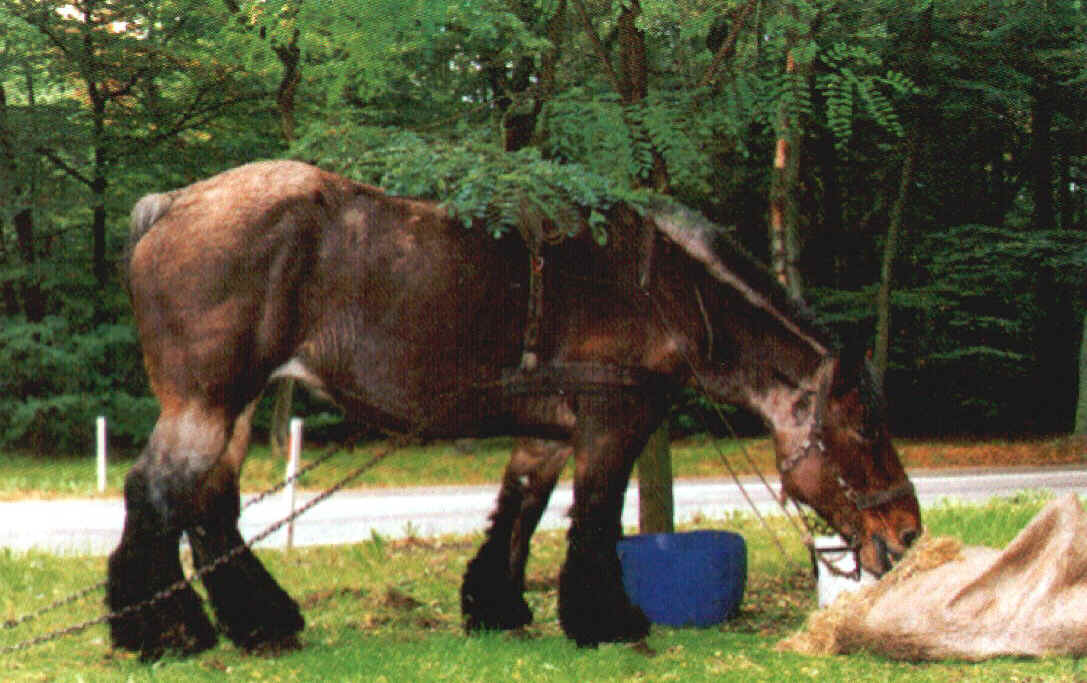



MISSOURI FOXTROTTER
Breed of horse developed in the United States, known for its unique gait, the fox trot, a smooth, pace comfortable to both horse and rider. Developed around 1820 as a versatile horse for life on the North American frontier, the Missouri fox trotter now is an all-around horse for shows and trail riding. The Missouri fox trotter is a small- to medium-sized horse. It stands about 142 to 163 cm (about 46 to 64 in, or 14 to 16 hands) high at the withers. (the high part of the back, located between the shoulder blades). The body is wide with a long, broad back, deep chest, and muscular legs. The head is small with a tapered muzzle, large eyes, and pointed ears. The Missouri fox trotter's coat may come in any color, but chestnut (gold) with white markings is a common coloring. The Missouri fox trotter was developed by settlers who moved to Missouri from the states of Kentucky, Tennessee, and Virginia in the early 19th century, bringing with them American saddlebred, Arabian, Morgan, Thoroughbred, and Tennessee walker horses. Because horse racing was popular, many horses were bred at this time for speed as well as for transportation and farming. But as the influence of churches became established on the frontier, horse racing was forbidden for religious reasons in many communities. Settlers then turned their attention to developing a sure-footed horse that could navigate the Ozark Mountains while comfortably carrying a rider all day. The Missouri fox trotter was produced through their breeding programs. While the Missouri fox trotter is capable of a high, showy step, the fox-trot gait is its featured trait. When moving in the fox-trot gait, the Missouri fox trotter walks with its front legs and trots with its back legs. Its head nods in rhythm with the motion of the front legs, while the tail bobs in time with the steps of the back legs. The legs appear to glide in the fox-trot gait, rather than move in a high or showy action. The natural gait of this horse is emphasized by those who raise it, and alternative training methods are discouraged strongly. The Missouri fox trotter usually is ridden with a western rather than an English saddle, unlike other horses with a high or showy gait. This horse carries its back level, which gives a smooth, comfortable ride. It does not tire easily: When moving in the fox-trot gait, it can maintain a steady speed of 8 to 11 km/h (5 to 7 mph) over a long distance, and can reach 16 km/h (10 mph) for a short distance.
Belgium Heavy Draft horse - Cleveland Bay - Clydesdale - Dutch Warmblood - Gelderlander - Holsteiner - Irish Draught - Lippizaner - Missouri Fox Trotter - Morgan Horse - Mule - Mustang - Oldenburger - Palomino - Percheron - Peruvian Paso - Pinto - Quarter Horse - Selle Francais - Standardbred - Tarpan - Tennessee Walker - Trakehner - Ungulate (onevenhoevigen) - Zebra